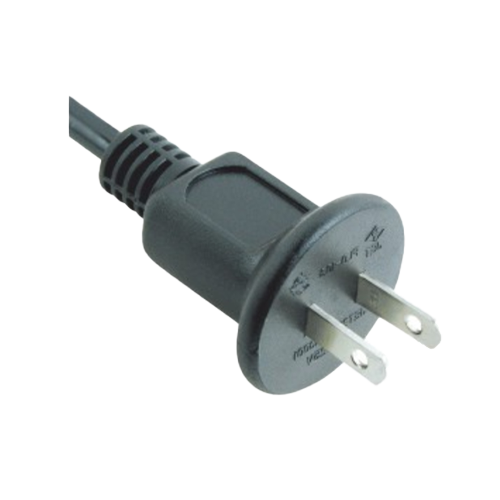To solve common problems with American standard power cords like wear or loose connections, follow these steps:
Inspect the Cord: Begin by conducting a meticulous visual examination of the entire length of the power cord. Look for any visible signs of wear, including fraying, cuts, abrasions, or kinks. Pay close attention to areas near the plugs and connectors, as these are frequent points of stress and vulnerability. Use a magnifying glass if necessary to identify any minute damages that may not be immediately apparent to the naked eye. It's crucial to perform this inspection regularly, especially before each use, to catch any potential hazards early and prevent electrical accidents or equipment damage.
Replace Damaged Cord: If any damage is detected during the inspection, it's imperative to replace the cord promptly. Select a replacement cord that matches or exceeds the specifications and ratings of the original cord. Consider factors such as wire gauge, insulation material, voltage rating, and current capacity to ensure compatibility with your equipment and operating environment. Opt for high-quality cords from reputable manufacturers to guarantee reliability and safety. Keep spare cords on hand for quick replacements, especially in high-demand environments or critical applications where downtime must be minimized.
Check Connections: Inspect the connections at both ends of the power cord, including the plugs and receptacles, to ensure they are securely seated and free from damage or contamination. Verify that the prongs or pins on the plugs are straight, intact, and properly aligned with the corresponding slots or sockets in the receptacles. Check for any signs of corrosion, oxidation, or foreign debris that may hinder electrical contact or cause resistance. If necessary, use a soft brush, cotton swab, or compressed air to clean the contacts and remove any obstruction. Avoid using abrasive materials or excessive force, as these can damage the contacts and compromise the connection integrity.
Clean Connections: Regular cleaning of the electrical contacts is essential to maintain optimal conductivity and prevent voltage drop or arcing. Use a mild solvent or electrical contact cleaner to dissolve and remove dirt, grease, or oxidation from the metal surfaces. Apply the cleaner sparingly to avoid excessive dripping or pooling, which can cause short circuits or damage sensitive components. After cleaning, allow sufficient time for the solvent to evaporate completely before reconnecting the cord to the power source. Inspect the contacts periodically and repeat the cleaning process as needed to ensure continued reliability and performance.
Avoid Overloading: Exercise caution to avoid overloading the power cord by connecting too many devices or drawing excessive current beyond its rated capacity. Overloading can lead to overheating, voltage fluctuations, and increased risk of electrical hazards such as short circuits, fires, or equipment damage. Calculate the total power consumption of all connected devices and ensure that it does not exceed the maximum capacity of the cord. Consider using a power strip, surge protector, or uninterruptible power supply with built-in overload protection to distribute and manage the load safely. Monitor the power usage regularly and redistribute the devices if necessary to maintain a balanced and stable electrical system.
JT-2FC Two-core US standard plug power cord

JT-2FC Two-core US standard plug power cord



 English
English عربى
عربى











